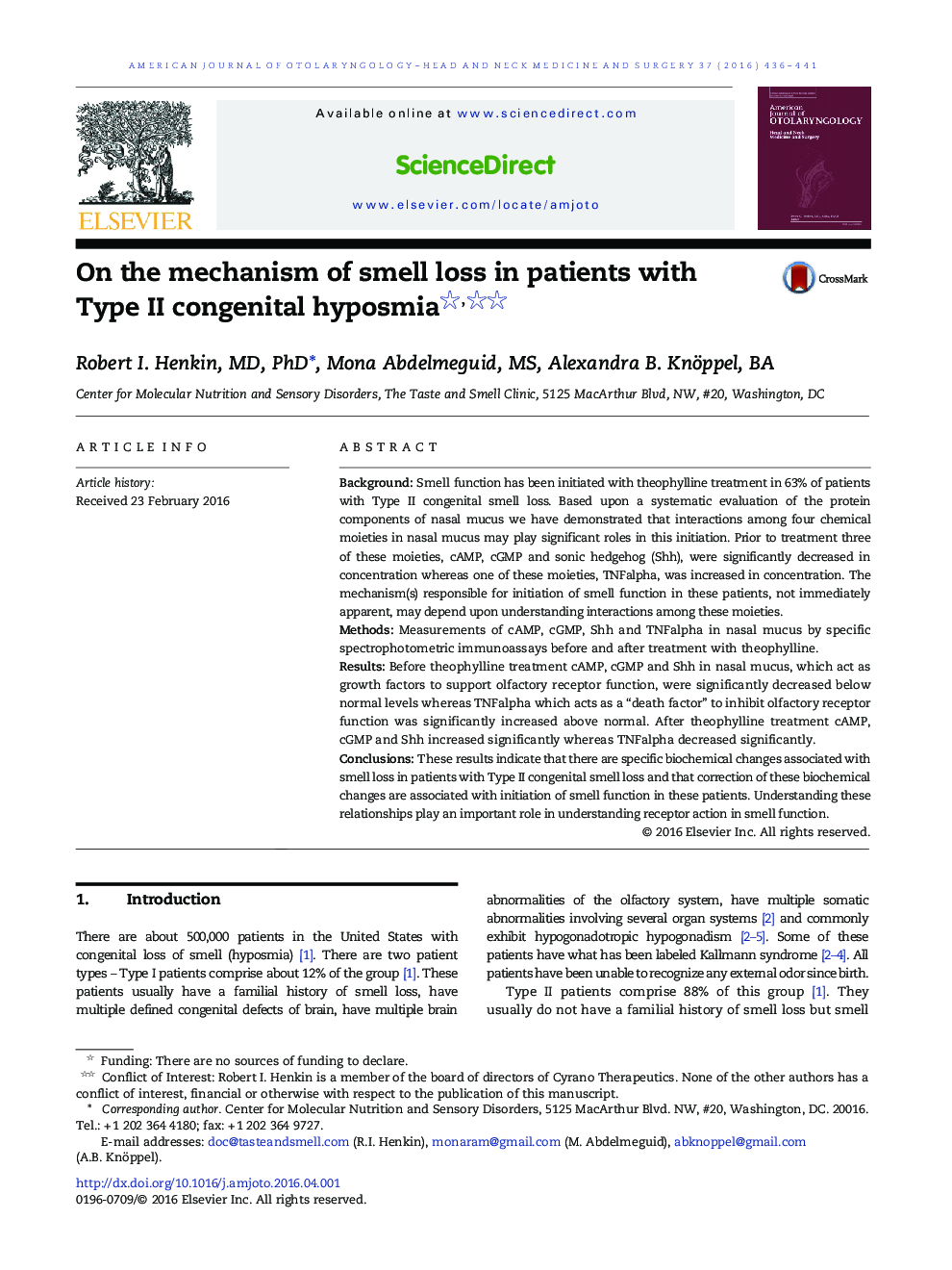| Article ID | Journal | Published Year | Pages | File Type |
|---|---|---|---|---|
| 4102894 | American Journal of Otolaryngology | 2016 | 6 Pages |
BackgroundSmell function has been initiated with theophylline treatment in 63% of patients with Type II congenital smell loss. Based upon a systematic evaluation of the protein components of nasal mucus we have demonstrated that interactions among four chemical moieties in nasal mucus may play significant roles in this initiation. Prior to treatment three of these moieties, cAMP, cGMP and sonic hedgehog (Shh), were significantly decreased in concentration whereas one of these moieties, TNFalpha, was increased in concentration. The mechanism(s) responsible for initiation of smell function in these patients, not immediately apparent, may depend upon understanding interactions among these moieties.MethodsMeasurements of cAMP, cGMP, Shh and TNFalpha in nasal mucus by specific spectrophotometric immunoassays before and after treatment with theophylline.ResultsBefore theophylline treatment cAMP, cGMP and Shh in nasal mucus, which act as growth factors to support olfactory receptor function, were significantly decreased below normal levels whereas TNFalpha which acts as a “death factor” to inhibit olfactory receptor function was significantly increased above normal. After theophylline treatment cAMP, cGMP and Shh increased significantly whereas TNFalpha decreased significantly.ConclusionsThese results indicate that there are specific biochemical changes associated with smell loss in patients with Type II congenital smell loss and that correction of these biochemical changes are associated with initiation of smell function in these patients. Understanding these relationships play an important role in understanding receptor action in smell function.
